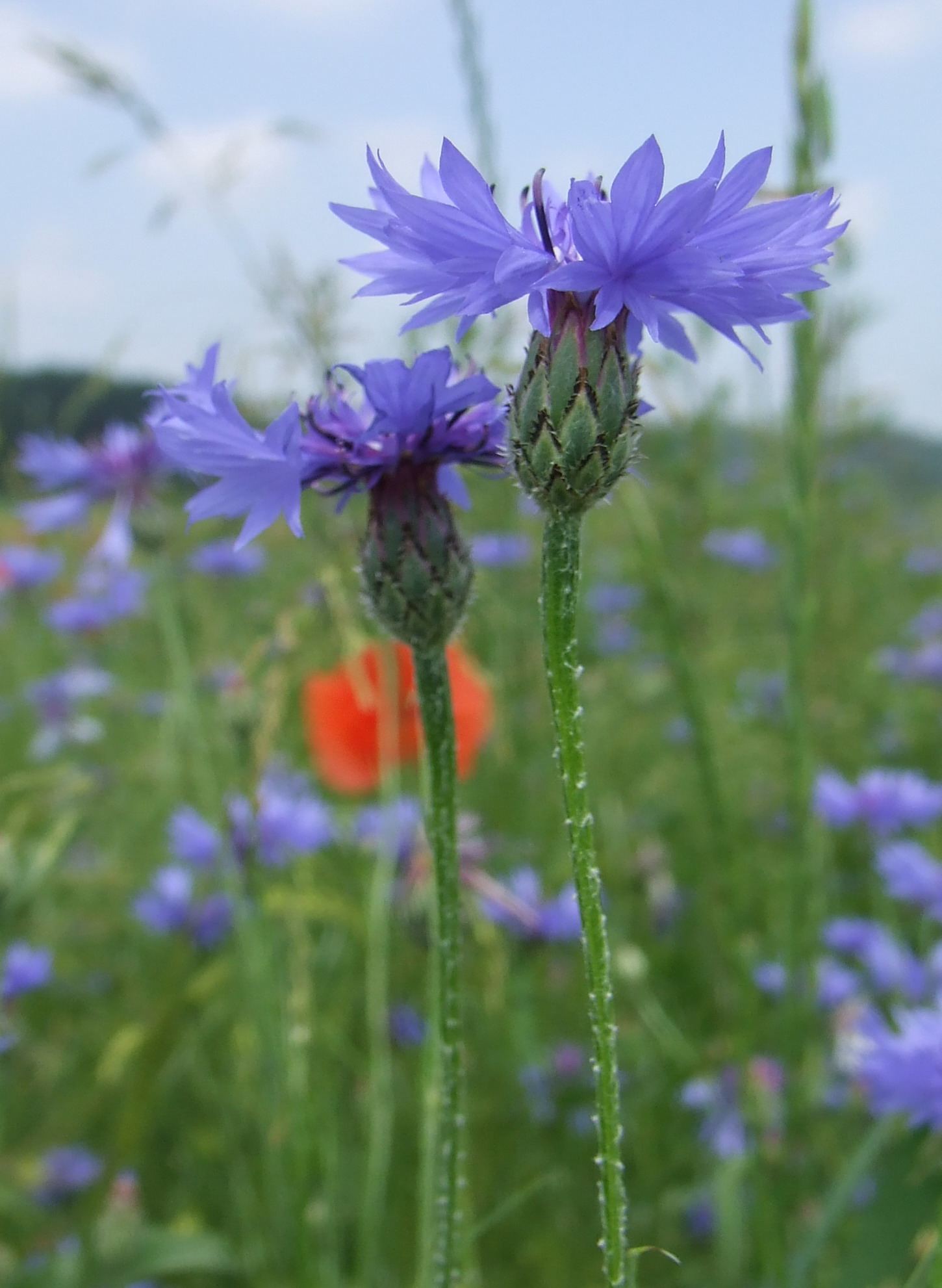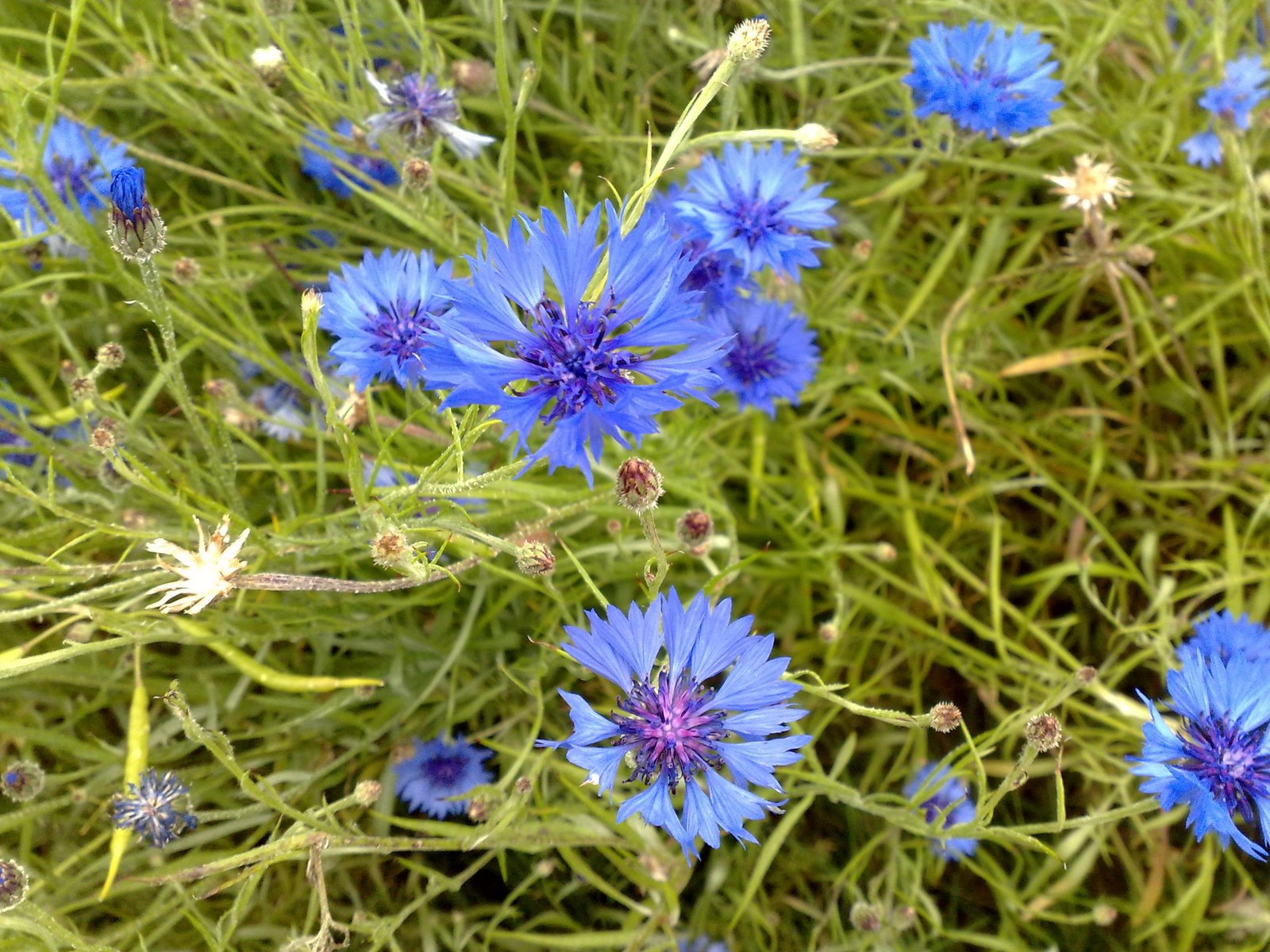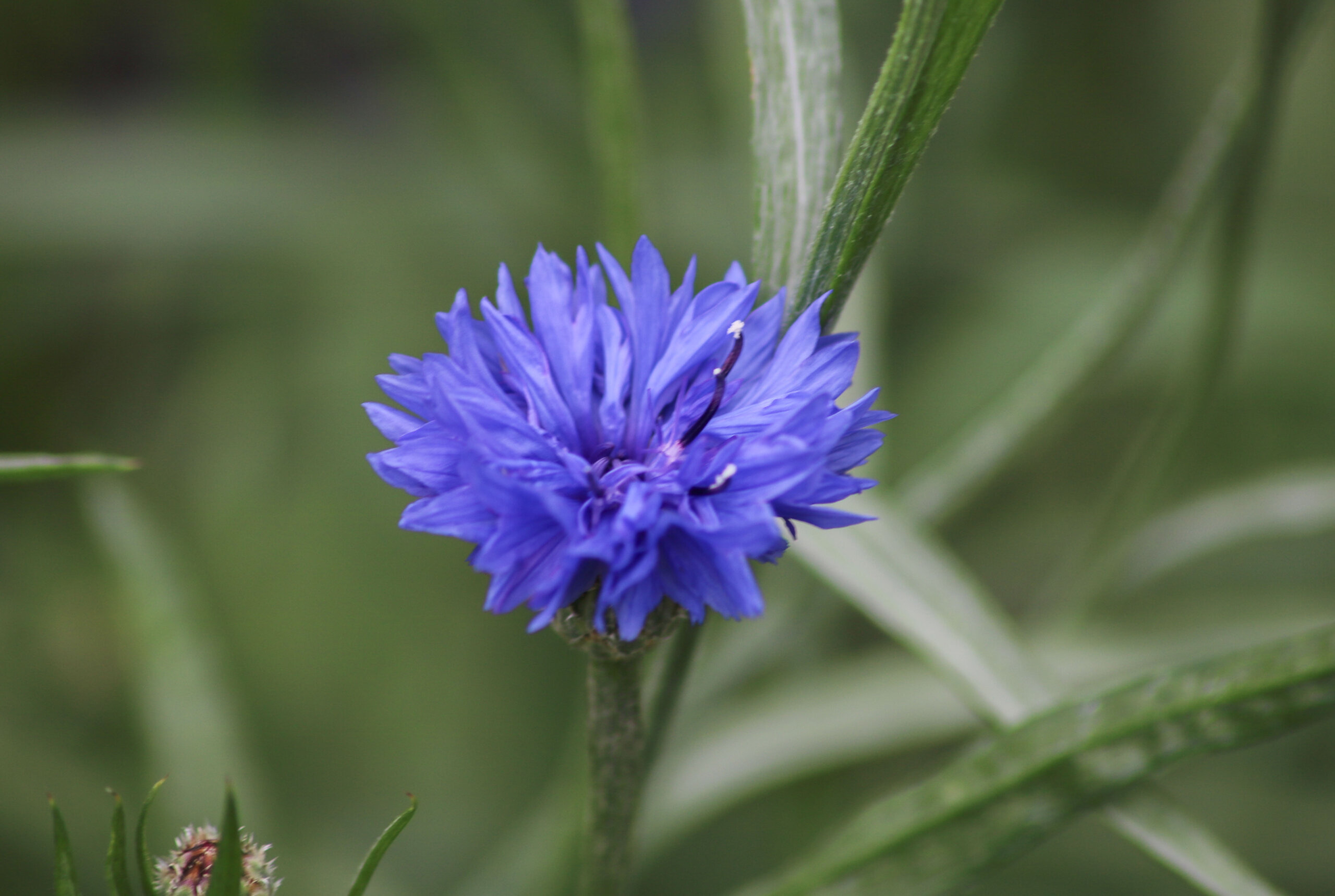Centaurea cyanus
Description
- Annual plant that reaches 20-100cm tall on grey-green, erect, hairy, branching stems.
- The flowers are often blue, but can be pink, white or purple. They are darker around the edges and form a bell shape stemming from the top of the flower head.
- Flowers from June through September.

Introduction and spread
- Native to Europe (where it is now considered endangered) it was introduced as a popular horticultural flower and is often found in “wildflower” mixes.
- Also likely introduced through contaminated crop seeds.
- It spreads through seeds and is a prolific seed producer. Seeds germinate quickly after planting.
Consequences of invasion
- Outcompetes native vegetation in grasslands and meadows.
- Can reduce crop yields and crowd out forage due to dense colonies.
Status in the CKISS region
- Bachelor’s button is currently classified as Insufficient Information in the CKISS region on the CKISS Annual Priority list. This means that there is insufficient information for bachelor’s button about its distribution, impacts, potential for spread and/or feasibility of control.
Integrated pest management options
- Become PlantWise and learn about Grow Me Instead. Select alternative, non-invasive plants.
Prevention
- Repeated hand pulling, ensuring complete removal of the root system, is the most effective way of reducing bachelor’s button.
- Regular mowing can reduce weed progression.
Mechanical control
Additional resources


